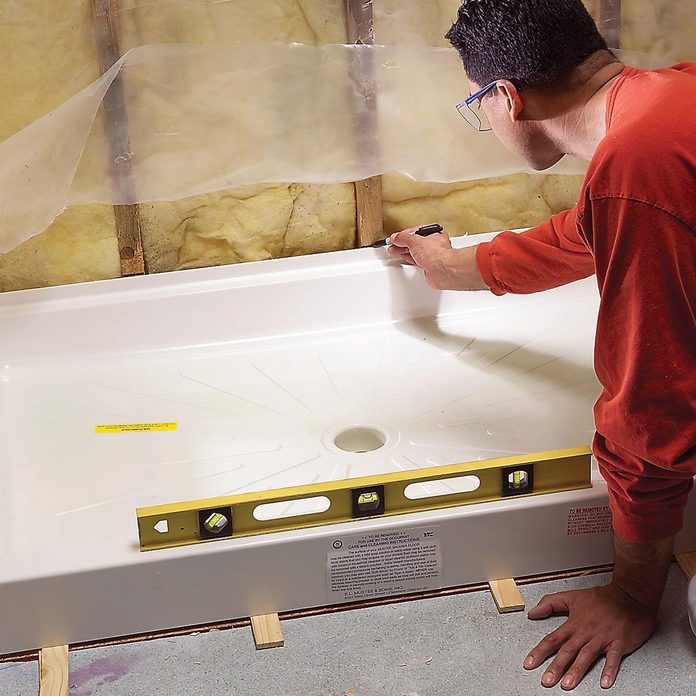Tackling-Dealing with-Managing Your Own-Personal-DIY Shower Drain-Bathroom Drain-Drainage System Installation-Setup-Project
Tackling-Dealing with-Managing Your Own-Personal-DIY Shower Drain-Bathroom Drain-Drainage System Installation-Setup-Project
Blog Article
In this article below you can discover some quality tips involving How to Choose the Best Drain for Your Shower.

Upgrading a shower room is among the much more prominent house improvement jobs. Dealing with the plumbing for draining your shower can be exceptionally simple unless you go overboard.
Managing Your Own Shower Drain Setup Job
You can physically build a collector for your brand-new shower, but you really require to think about it. Do you actually intend to enter the problems of obtaining the sloping proper, as well as making sure every aspect of it is water-proof? And also I suggest every element! It is much easier to just purchase a pre-cast collection agency online or at your neighborhood copyright, Home Depot or hardware store. Building one might seem like an excellent concept, however you will possibly feel differently after a couple of hrs.
Despite how you deal with getting a frying pan, you ought to make every effort to utilize one that has the drain located in the same place as the initial frying pan. Relocating the drainpipe pipes can be a task, especially if the building contractor made use of an unique framework structure. If you are established to move the drain, you are going to have to reduce the pipeline or lengthen it, which might indicate ripping up big chunks of the flooring. Put another way, you are mosting likely to be taking a look at a numerous weekend job.
Thinking we have our drain aligned, the actual hook up is relatively simple. The drainage pipeline ought to be dealing with upright up to the enthusiast. It will typically resemble a "U", which implies it works as a cleanout to keep nasty scents from returning up from the drainpipe. To link the drainpipe, you are going to create a water limited link between a drain cap on the top of the frying pan as well as the water drainage pipe. Solutions differ, yet you are generally mosting likely to do this by placing a coupling piece on the top of the drain pipe. This is then covered with gaskets and actually screwed right into the drainpipe cap. The drain cap ought to function as a locknut, to wit, it screws straight onto the combining.
The tricky part of this process is getting your drainpipe cap to match a leak-proof position in the pan. This is accomplished by withdrawing the drainpipe cap once you are sure whatever fits together. Then, you placed plumbers putty around the underside of the cap and after that screw it back on. The putty ought to develop a limited seal between the cap and also the shower frying pan, which keeps water from trickling under it and into the framing under the shower.
Certainly, restroom showers can be found in a variety of designs nowadays. If you acquire an enthusiast, they generally included plumbing directions or the store can keep in mind anything uncommon you must know. It appears intricate, yet is commonly rather easy. Have a good time!
Whether you are a tub or shower person, most individuals try to find shower only options when buying a house. This straightforward reality implies greater than a couple of property owners spend a weekend updating or setting up showers in their restrooms. Luckily for you, it is a relatively easy procedure.
An enthusiast or pan describes the horizontal surface situated at the bottom of the shower. The enthusiast commonly consists of a non-slip surface a little banked in the direction of the center or wherever the drainpipe is located. Combined with three to 4 inch walls around the side, the objective of your shower drainage plumbing is to get the water to flow to and also down the drain.
Tips for Installing a Shower Drain Assembly
Renovating a bathroom can be exciting as well as fulfilling if you’re tackling the job DIY-style. After you cross off the bigger decisions such as tile style, paint colors, and fixtures, you’ll need to finalize smaller details – such as the shower drain. In this article, we’re sharing some tips for selecting and installing the right drain assembly for your updated shower.
What is a shower drain assembly?
Shower bases or pans typically only come with a pre-drilled drain hole. Since the pan slopes toward the drain, you should consider the placement – left, center, or right – when designing your shower. You’ll need to purchase and install a shower drain assembly that connects the shower pan to the drain pipe underneath the shower. There are a few types of assemblies, which will be covered below.
Size of a shower drain
When it comes to installing drains, size matters. The recommended pipe size for a shower drain is 2 inches, whereas most tubs use 1.5-inch pipes. Why the difference?
Shower pans are shallower than tubs, so there’s a higher risk for overflow. So, the larger pipe allows for quicker draining. If you are replacing an old tub with a newer stand-up shower, you will need to make additional plumbing adjustments to accommodate the 2-inch pipe.
Types of shower drain assemblies
There are three common types of shower drain assemblies: compression shower drain, solvent-glue shower drain, and tile shower drain. The layout, design, and materials of your shower can determine which type of shower drain assembly will work best.
Compression shower drain
This type of assembly attaches to the drain pipe with compression washers and nuts. The drain fitting is typically installed into the base, and then the base is installed into the bathroom floor. This makes compression-style drains easier to install than other options, particularly if you don’t have easy access from the floor under the shower base. Drains are available in a wide range of materials such as PVC (polyvinyl chloride), ABS (Acrylonitrile Butadiene Styrene), and brass, and can be used for acrylic, fiberglass, and steel shower bases.
Solvent-glued shower drain
Made of either polyvinyl or ABS, this type of shower drain is sealed to the drain pipe with solvent glue and silicone. Since you’ll be working underneath the drain pan, we only recommend using this type of drain if you have access under the shower, such as from a basement or crawlspace. It’s also important that you match the type of plastic of the drain with the drainpipe. If you take these precautions, you can install a solvent-glued drain assembly with acrylic, fiberglass, and steel shower bases.
Tile shower drain –
Drain assemblies for custom tile showers feature a waterproof membrane liner placed between two flanges. The tile is installed on top of the liner, collecting any water that seeps through the porous grout. A metal strainer is installed in line with the tile over the drain.
https://www.epshawaii.com/blog/tips-for-installing-a-shower-drain-assembly/

I was shown that editorial on How to Install a Shower Drain in a Basement from an acquaintance on a different web blog. Sharing is nice. You just don't know, you could be helping someone out. I take joy in reading our article about How to Install a Shower Drain.
Report this page